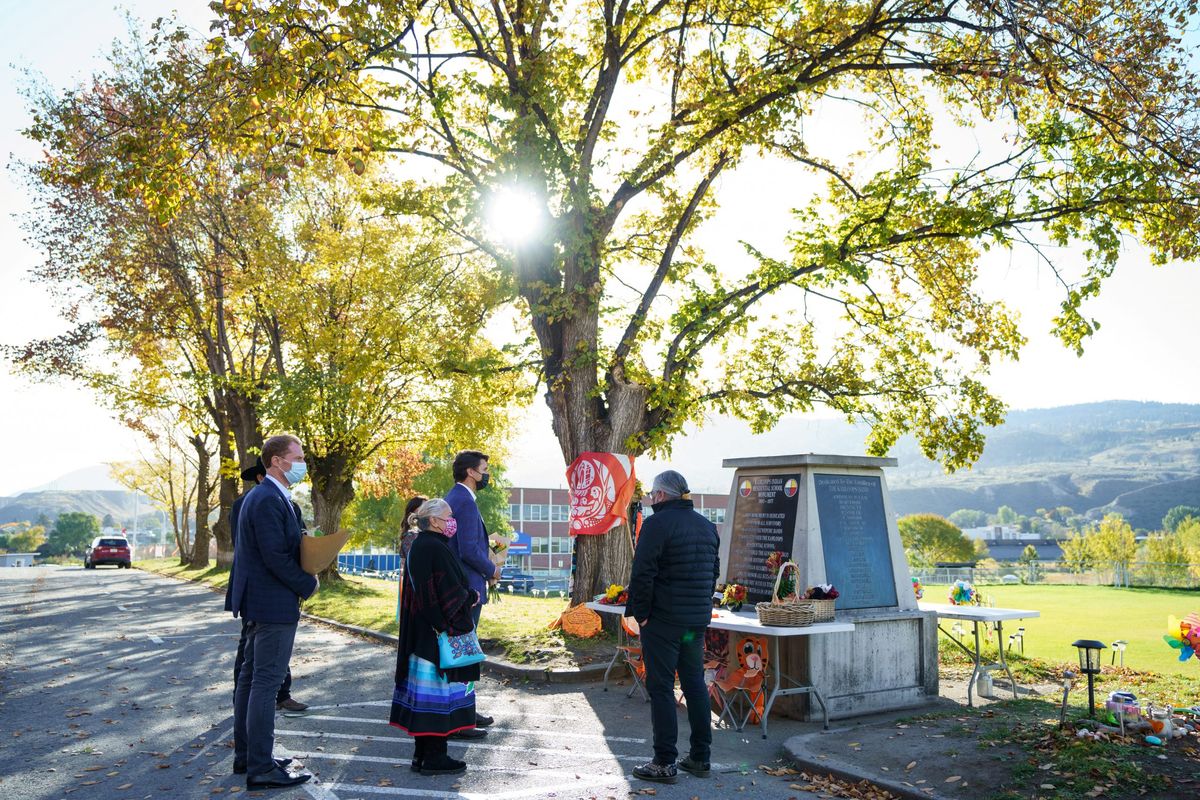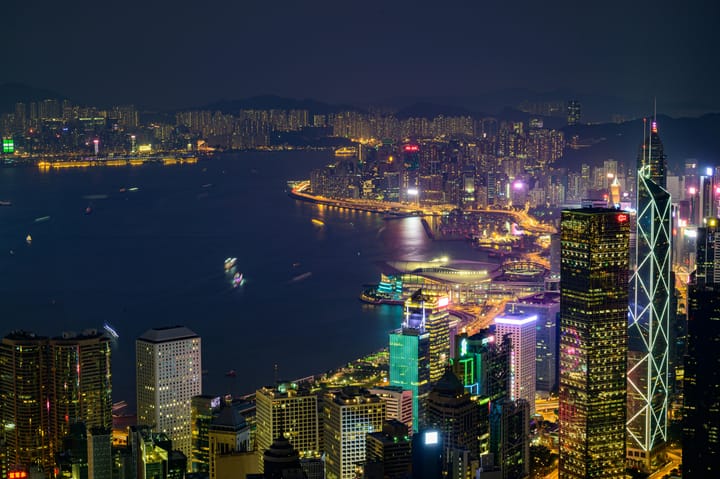What you need to know about the mass graves of Indigenous children in Canada that sparked outrage worldwide
For decades, there have been thousands of unaccounted children that were forcibly sent to boarding schools in Canada. Now, well over a thousand bodies have been discovered to be buried below some of these schools sparking domestic and international outrage.

A few minutes every morning is all you need.
Stay up to date on the world's Headlines and Human Stories. It's fun, it's factual, it's fluff-free.
- Before there can be a conversation about the mass graves that have been recently found, it’s important to understand how the bodies of over a thousand children ended up there in the first place.
- Back in the 1800s, Canada had a bunch of schools – called residential schools – that were basically like boarding schools run by religious institutions.
- Indigenous children living in Canada were removed from their homes and forced to attend these schools until laws no longer made it mandatory in 1947.
- Still, this school system continued to exist until around the 1970s when they started going into decline, with the last school closing in 1996.
- The goal of this school system was to separate and isolate Indigenous children from the influence of their own native culture and religion. It is estimated that over 150,000 children were placed in these residential schools.
What about these mass graves?
- There have been dozens of these gravesites that have been discovered since the 1990s.
- The Truth and Reconciliation Commission of Canada (TRCC), which operated between 2008 and 2015, conducted extensive research which determined that most school-related deaths were caused by the spread of tuberculosis – a potentially fatal lung disease that ran rampant prior to modern medicine.
- While the real number is almost impossible to determine due to incomplete numbers, the TRCC determined that there have been over 1,800 bodies discovered so far, and some estimates put the number of possible deaths as high as 30,000.
- While the TRCC finished conducting its research in 2015, there are still graves being discovered and children’s bodies being found.
- “It’s a harsh reality and it’s our truth, it’s our history,” said Chief Rosanne Casimir of the Tk’emlups te Secwepemc First Nation. “And it’s something that we’ve always had to fight to prove. To me, it’s always been a horrible, horrible history.”
- General responses from the public have been outrage and disgust at these actions after the issue was reignited after a grave with around 200 bodies was discovered just last month.
How has the general public responded?
- While most criticisms of these residential schools have been conducted either verbally or legally, some expressions of anger have taken on a more violent approach.
- Between the months of June and July, dozens of churches in Canada were burned in a series of arson and suspicious fires, with officials speculating that these burnings were a response to the grave discoveries.
- Many leaders who are also recognized as Indigenous people, have expressed their outrage at these burnings. “I’m angry," Lower Similkameen Indian Band Chief Keith Crow told a local news organization. “I don’t see any positives coming from this and it’s going to be tough."
- Jenn Allan-Riley was taken from her family as part of the Sixties Scoop, a period whereby Canadian authorities were allowed to “scoop up" Indigenous children from their families to be adopted by white families. Allan-Riley is also a daughter of a residential school survivor. However, she stated that “Burning down churches is not in solidarity with us Indigenous people" and “we do not destroy other people’s places of worship.”
- These church burnings were also met with overwhelming criticism from leading officials such as Canadian Prime Minister Justin Trudeau, who called the attacks “wrong and unacceptable” while also noting that any anger was “completely understandable.”
- And at the same time, Trudeau is also dealing with criticism from other nations, such as China – a nation which Canada itself has accused of mistreating ethnic minorities.
How did China and the US respond?
- China openly criticized the Canadian government for its involvement in the cultural eradication of Indigenous people.
- Jiang Duan, a senior Chinese United Nations official, told the Human Rights Council that China and its allies are expecting a “thorough and impartial investigation … to bring those responsible to justice, and offer a full remedy to victims."
- “We are deeply concerned about the serious human rights violations against the Indigenous people in Canada,” said Jiang. “Historically, Canada robbed the Indigenous people of their land, killed them and eradicated their culture."
- Canada isn’t the only country that is currently under investigation for its treatment of Indigenous people, with the United States announcing that it would conduct its own investigation regarding residential schools.
- “The Interior Department will address the inter-generational impact of Indian boarding schools to shed light on the unspoken traumas of the past, no matter how hard it will be,” said Secretary of the Interior Deb Haaland.
- “I know that this process will be long and difficult. I know that this process will be painful. It won’t undo the heartbreak and loss we feel. But only by acknowledging the past can we work toward a future that we’re all proud to embrace.”
What’s next?
- It’s a little too hard to say what can be done or what should be done to fix these problems.
- Some experts are suggesting the only solution is government reparations.
- Reparations are when a government provides financial compensation to an affected party through either direct payments or dedicated social programs to assist with the advancement and protection of a group of people.
- While the Canadian government has offered reparations to Indigenous people in the past, the US$3 billion that the Canadian government received for reparations left many Indigenous people more offended.
- But Mike Benson, the executive director of the National Residential School Survivor Society, believes that it’s almost impossible to determine what the correct number will look like considering how much Indigenous people lost.
- “You can’t put a price tag on the lost cultural languages or the people being taken from their homes for years [at a time]," said Benson. “But for some of the elderly survivors, they are finally getting acknowledgement [that this happened]."
You drive the stories at TMS. DM us which headline you want us to explain, or email us.




Comments ()